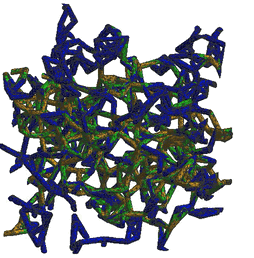Solid Mechanics and Materials Engineering
Department of Engineering Science
University of Oxford
Dislocation Motion in Irradiated Alloys
Nuclear energy has become the second-largest source of low-carbon electricity production globally, placing it at the center of a sustainable energy future. Materials in nuclear power plants experience high temperatures, high strain rates, and--uniquely--radiation induced damage. Neutron irradiation can have devastating effects on the mechanical properties of structural materials. The arrival of highly energized particles (typically neutrons) will eject atoms (called primary knock-on atoms (PKAs)) from their lattice sites, collide with neighbor atoms, and create displacement cascades. During this process, a high density of defects is introduced that hinder dislocation motion, resulting in hardening and a decrease in ductility. I utilize discrete dislocation dynamics to study this behavior in particle-strengthened alloys.

Rao et al., Acta Materialia. (2019).
MMOD Protection (NASA NSTGRO)
Micrometeoroids and orbital debris (MMOD) shielding is critical to the success and survival of all space missions. However, physical hypervelocity (HVI) experiments are difficult to execute and prohibitively expensive. This both severely constrains the number and assortment of shielding designs that can be tested and makes determining optimal engineering safety factors a major difficulty. These issues directly demonstrate an urgent need for accurate numerical models appropriate for both the design and validation of new and existing shielding materials. The work proposed here will yield a novel, physics-based insight into the material response of solid foam-based shielding in realistic and operationally relevant HVI conditions.

Dynamic surfaces of scandate cathodes (DARPA)
Scandate cathodes are a high-performing subset of thermionic cathodes that emit up to a magnitude higher current density than current generation cathodes. We are combining quantum mechanical calculations with characterization techniques like TEM, Kelvin Probe, and APS to deduce the properties of scandate cathode surfaces at operating temperature (~850 °C).
SE imagine: Liu et. al. Materials Characterization. 2019


